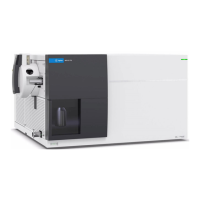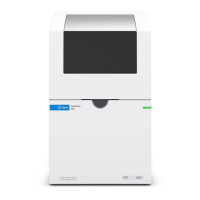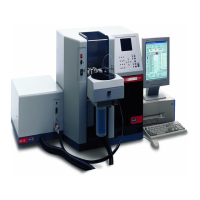AC Voltage
This section describes how to configure AC voltage measurements from the front panel.
Default delays are selected to give correct first readings for most measurements. For the most accurate
measurements, the input blocking RC time constant must settle to 1/50 of the AC signal level.
Signals greater than 300 V (rms) or 1 A (rms) will cause self-heating in signal-conditioning components.
These errors are included in the instrument specifications. Internal temperature changes due to self-
heating may cause additional error on other functions or ranges. The additional error will generally
dissipate within a few minutes.
For example, consider a 100 mVAC signal with a 10 VDC bias. The 10 VDC bias should be settled to 1/50 of
100 mVAC, or 2 mVDC. The corresponding settling time can be calculated using the blocking RC time
constant of 0.22 s as follows:
settling time = ln(bias/settled value) * 0.22 s
settling time = ln(10 VDC / 2 mVDC) * 0.22 s
settling time = ln(5000) * 0.22 s = 1.9 s
This additional settling delay should be applied after connecting the signal to the DMM's ACV input or after
selecting the ACV function with the signal already connected. If the DC bias remains constant, subsequent
measurements can be made to full accuracy without additional settling delays.
Step 1: Configure the test leads as shown.
Step 2: Press [ACV] on the front panel.
Step 3: Press Range and choose the range for the measurement. The autorange feature (Auto) automatically selects
the range for the measurement based on the input. Autoranging is convenient, but it results in slower measurements
than using a manual range. Autoranging goes up a range at 120% of the current range, and down a range below 10%
of the current range.
Agilent Truevolt Series DMM Operating and Service Guide 37
